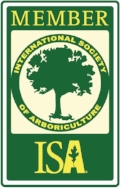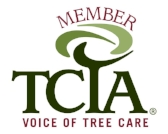Trimming & Pruning
Most people tend to think of pruning as topiaries or geometric shapes along the lawn. This line of thinking results in many homeowners taking a hedge trimmer to the outermost tips of branches in their yards to create a desired shape or a uniform height. While this can be appropriate for certain bushes, what most are left with is an abundance of unsightly deadwood.
True pruning by a professional offers a more structured, comprehensive, and detail-oriented method of reducing and shaping our trees and shrubs. Because each cut has the potential to change the growth of a tree, no branch should be removed without first establishing a client’s objectives for the job. Common goals from homeowners may include:
Refining the aesthetics of your home
Improving the view from your property
Reducing the potential for tree or branch failure
Providing clearance from a home or other structure
Reducing shade to underlying plants and grass
Maintaining health and longevity
Influencing flower or fruit productions
Types of Pruning
There are several levels or types of pruning and each really depends on the desired look, overall structure/age/condition of the tree, as well as other factors like the ability of air to flow-through. A brief description of our more common pruning is below. Please note that a combination of these prunings may be performed to give you the overall desired outcome as you've discussed with your estimator, Justin.
Canopy Reduction
Canopy or crown reduction will reduce the size of your tree by cutting carefully chosen limbs back to viable places within the tree. Each species has a limit to how much reduction can safely be performed to maintain structural integrity and natural form without harming the tree itself, which is why we typically do not recommend complete "topping" or "lopping" unless circumstances are drastic. Your estimator can tell you more about this type of pruning based on your landscaping
Deadwood Removal
Deadwood Removal
Accumulation of deadwood is a natural process for many fast growing trees. As your trees and shrubs grow and branch out, smaller interior branches receive less sunlight and become more susceptible to extreme temperatures. The tree prioritizes its sap to structural support branches and eventually cuts off the supply to these smaller interior branches resulting in the deadwood. There are a number of reasons why it is beneficial to have it removed:
The first and foremost concern to homeowners is that deadwood is not aesthetically pleasing.
As smaller deadwood branches breaks off, it can create opportunities that allow for insects and moisture to accumulate, resulting in infestations and fungi.
If the deadwood is large enough, when broken, it can cause serious property damage. We always recommend removing deadwood that is at least 2” in diameter or greater to reduce your liability and increase your home’s safety.
Crown Thinning/Cleaning
Crown thinning and cleaning is the selective removal of branches to increase light penetration and air movement throughout the crown. It will also improve the structure and overall health of the tree by helping to maintain an even distribution of branches in the crown and along each limb.
Skirt Raising- this type of pruning raises the height of the tree be creating a vertical clearance. This is one of our most popular types of pruning, given the abundance of waterfront views, open acreage, and other gorgeous outdoor views that Montgomery County residence enjoy.
Structural Pruning
the basic principle for our younger and developing trees is to promote good structure for lasting health and longevity. A structural prune involves removing defects in branches or discouraging double stem growth, spacing branches appropriately along the main trunk, and measures that will reduce the likelihood of splitting. In some cases, structural pruning may also be ideal for older trees with structural problems. Your estimator will go over recommendations based on a number of factors as well as recommendations on annual services to ensure proper growth and development as your trees reach maturity.
Before
Before
After
After
Utility/Clearance Pruning
Limbs overhanging the roof or garage can be damaging to yoiur roof and dangerous in the event of a storm. If your trees overhang onto the street, there are height requirements for emergency and school vehicles to pass by without hitting these limbs. Depending on your municipality, usually pruning for main utility poles is taken care of by the city itself. However, in some areas the responsibility of the area from a main power line to the home falls onto the homeowner. Our crew is experienced in these situations and will perform services safely and cautiously when necessary.










